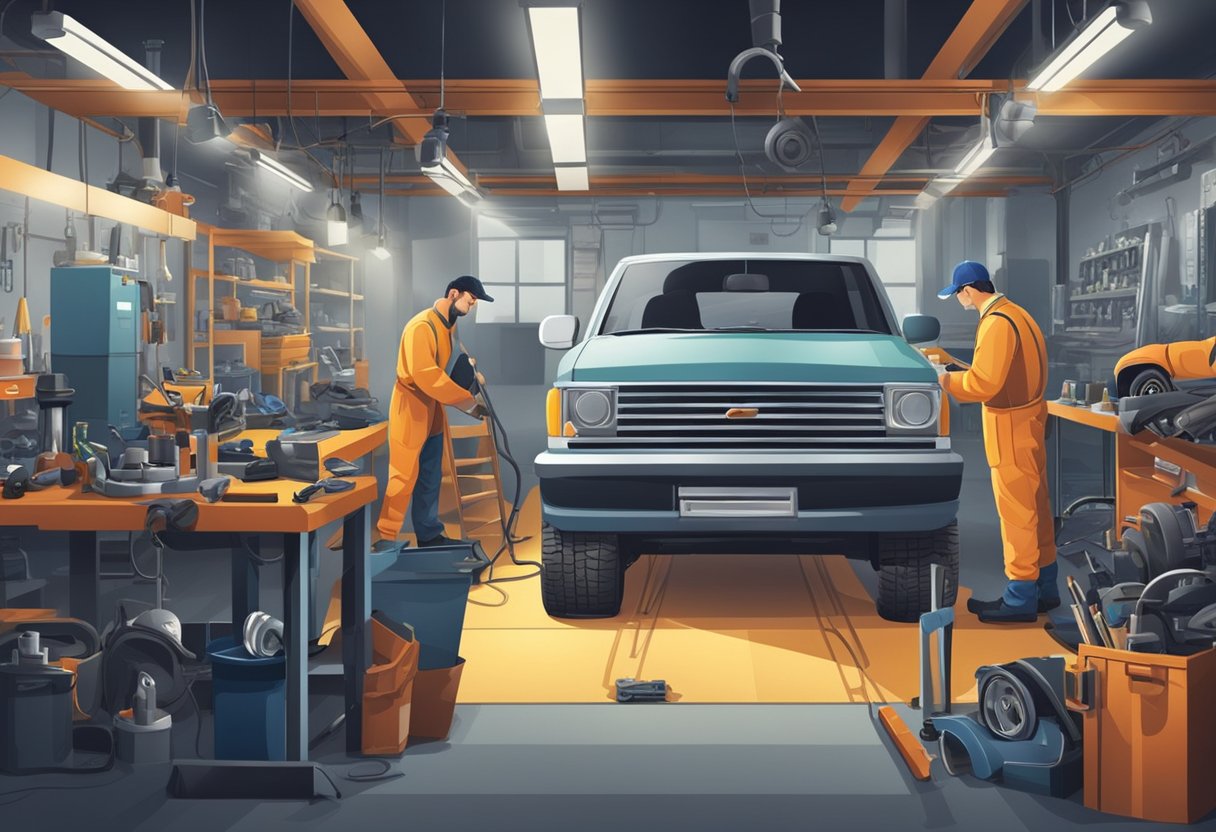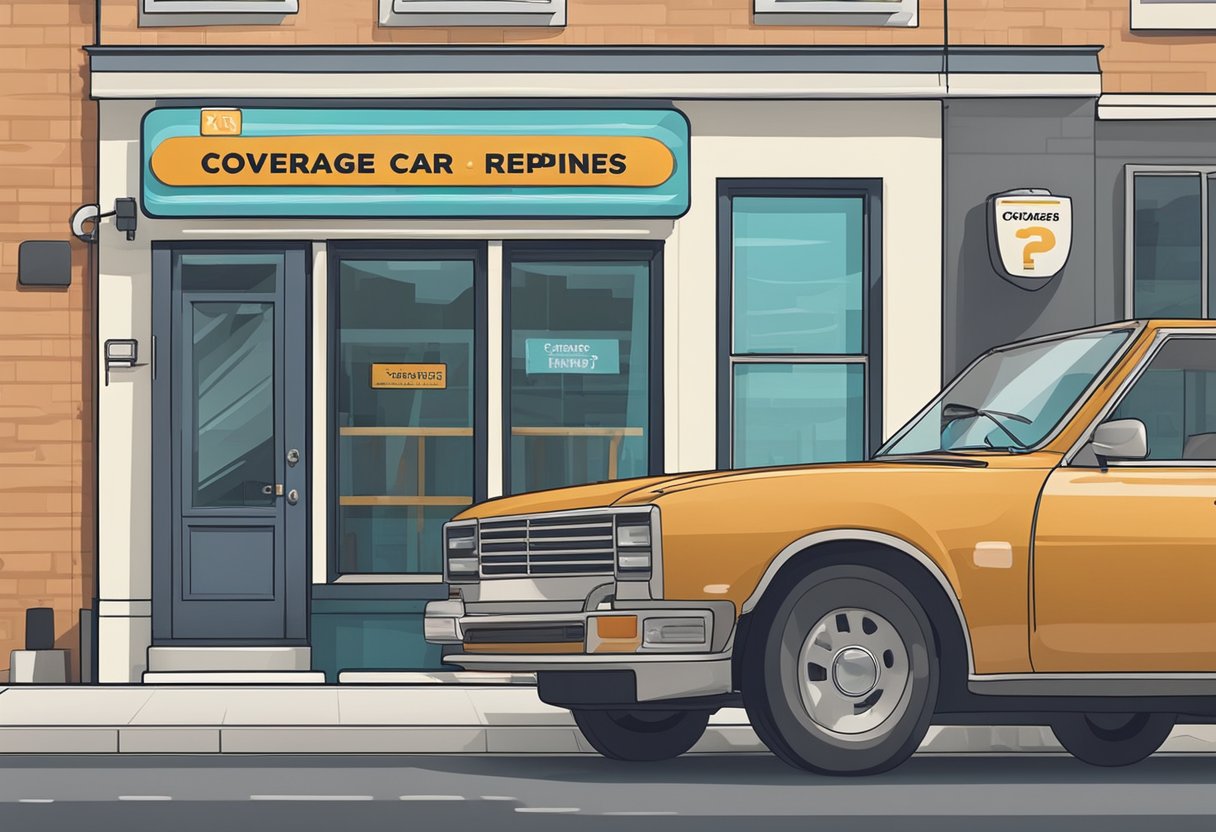When considering the scope of car insurance, a common question that arises is “does car insurance cover repairs?”. The response is often not clear-cut, as it primarily hinges on the specific type and level of coverage you’ve procured.
Generally, basic liability insurance, which is mandatory in most regions, does not cover repairs to your own vehicle; it is designed to protect against the financial consequences of damaging another person’s property or causing injury.

More comprehensive insurance policies, including collision and comprehensive insurance, offer broader protections that may include repair costs for your own vehicle. Collision coverage is specifically aimed at covering repair costs if your car is damaged in a traffic accident, regardless of who is at fault. Comprehensive insurance, on the other hand, is intended to protect you from non-collision-related incidents, such as theft, vandalism, or natural disasters. However, it’s important to understand that even these more inclusive policies have limits, deductibles, and exclusions that can affect the extent of coverage.
Key Takeaways
- Car insurance repair coverage depends on the policy type.
- Liability insurance does not cover your own car repairs.
- Collision and comprehensive coverage may cover repairs with certain limitations.
Basics of Car Insurance Coverage

Navigating car insurance coverage can be complex, but understanding the basics is essential for every driver. This section breaks down the key components, from what car insurance is to selecting the right policy for you.
What Is Car Insurance?
Car insurance is a contract between the driver and the insurance company, where the driver pays premiums and the insurance company agrees to cover certain costs associated with vehicle damage, loss, and liability as outlined in the policy terms.
Types of Car Insurance Policies
- Liability Insurance: Mandatory in most states, it covers bodily injuries and property damage to others for which you are responsible.
- Collision Insurance: Provides coverage for damage to your vehicle caused by a collision, regardless of fault.
- Comprehensive Insurance: Protects against damage to your vehicle that is not caused by a collision, such as theft, vandalism, or natural disasters.
Understanding Your Insurance Policy
An insurance policy is an agreement detailing the conditions and circumstances under which the insurer will compensate the insured. Reading and understanding your policy is crucial because it explicitly states what is covered, the coverage limits, and the deductible amounts.
Coverage for Car Repairs

In determining if car insurance covers repairs, it is essential to understand the type of coverage one holds. Specific car insurance coverage types may fund repairs related to distinct events or damages.
Comprehensive Coverage
Comprehensive coverage is designed to finance repairs for damages not related to collisions. For example, if a vehicle is damaged due to theft, vandalism, or natural disasters like hailstorms, comprehensive coverage may pay for those repairs. This coverage is pivotal for protection from a range of non-collision incidents.
Collision Coverage
On the other hand, collision coverage is specifically meant for damages that occur as a result of a collision, whether it’s with another vehicle or an object, like a fence or a pole. If the insured’s car needs repairs after an accident, this coverage will typically handle the costs, minus the deductible the owner is responsible for.
Personal Injury Protection
Lastly, Personal Injury Protection (PIP) coverage handles medical expenses from injuries to the driver and passengers. While not directly related to car repairs, PIP can also cover lost wages and other non-medical costs resulting from an accident regardless of who was at fault.
Factors Affecting Repair Coverage
When it comes to car insurance covering repairs, several factors determine the extent of coverage. Policy limits, deductibles, and whether you are in an at-fault or no-fault state play pivotal roles.
Policy Limits
The policy limit represents the highest amount that an insurance company will reimburse for a covered claim. For instance, if a driver has a policy limit of $5,000 and the repairs cost $6,000, they would be responsible for the additional $1,000. It’s essential to choose a policy limit that reflects the value of the vehicle and potential repair costs.
Deductibles
A deductible is the out-of-pocket cost a policyholder agrees to pay before their insurance coverage kicks in. If a policy includes a $500 deductible and the repair costs $2,000, the insurance will cover $1,500. Higher deductibles typically lead to lower monthly premiums, but they also mean more out-of-pocket expenses when a claim is made.
At-Fault vs. No-Fault States
Whether a driver is in an at-fault or a no-fault state influences insurance repair coverage. In at-fault states, the driver responsible for the accident pays for the damages. In no-fault states, each driver’s insurance coverage handles their own repairs, regardless of who caused the accident. This distinction affects how claims are handled and can affect the timelines and processes for getting repairs covered.
Exclusions in Car Insurance
When discussing car insurance, it’s crucial to understand that not all vehicle repairs are covered. Policies frequently contain particular exclusions that restrict coverage.
Wear and Tear
Car insurance does not cover wear and tear. This means that routine maintenance and the natural aging process of a vehicle, which can cause components to deteriorate, is not covered by standard car insurance policies. For instance, issues such as aging brake pads or tire tread loss fall outside the realm of an insurance claim. Insurance companies consider these to be the owner’s responsibility in vehicle upkeep. For more clarification, visit Insurance.com on wear and tear.
Intentional Damage
Any damage that is inflicted on a vehicle intentionally by the owner or with the owner’s consent is not covered by car insurance. This includes scenarios where an owner may damage their vehicle purposefully to claim insurance money or if someone with access to the car causes damage without any external factors involved. Such actions are typically considered insurance fraud.
Uninsured Motorist Exclusions
Uninsured Motorist coverage is designed to protect policyholders in the event that they are involved in an accident with an uninsured driver. However, there are exclusions in this coverage too. It does not cover property damage in some states and only covers bodily injuries. Additionally, hit-and-run accidents may not always be covered under this provision. Every policyholder must review their individual policy’s exclusions, as they can vary widely. For a deeper understanding, peruse Lemonade’s explanation of uninsured motorist exclusions.
Filing a Claim for Repairs
When an individual files a claim for car repairs with their insurance, the process involves several steps, precise documentation, and choosing a suitable repair shop. It is vital to follow the insurer’s guidelines for a seamless experience.
The Claims Process
The claims process typically begins with the policyholder contacting their insurance provider as soon as possible after an incident. One must inform the insurer about the extent of the damage and provide an initial statement. Insurance companies often have a deadline for when claims need to be reported, so timely action is crucial. Following the report, an insurance adjuster will be assigned to assess the damage, either remotely or in person, and determine the cost of repairs.
Documentation Required
For a smooth claims process, the policyholder needs to provide several pieces of documentation. This typically includes:
- Proof of insurance: Policy number and identification.
- Accident report: Often a police report, if applicable.
- Photos: Clear images of the damage and accident scene.
- Personal account: A written description of the incident.
- Third-party information: Contact and insurance details if another party is involved.
Repair Shop Selection
The policyholder has the option to choose a repair shop. However, insurance companies may recommend certain shops within their network. One should understand that while they can select the repair shop, some insurance policies may only cover the cost of repairs up to the amount estimated by the insurance company’s adjuster or recommended repair shop. Policyholders should verify whether their insurer has partnership arrangements with local body shops, which might streamline the process and ensure the repairs are guaranteed.
Insurance Premiums and Repair Claims
When an individual files a claim for repairs under their auto insurance policy, it can influence the cost of their future premiums. It’s important for policyholders to understand the potential financial implications of filing a repair claim.
Impact on Future Premiums
After filing a claim for car repairs, insurance companies may reassess the policyholder’s risk level. If a policyholder is deemed more likely to file future claims, the insurer may increase premiums as a means of offsetting this risk. For instance, a person who has recently made a claim for a collision could see their rates go up at renewal time, as the insurer adjusts for the potential of additional incidents.
No-Claims Bonus
Insurance providers often offer a no-claims bonus (NCB) or discount to policyholders who do not file any claims over a certain period. This serves as a reward for safe driving and claim-free record. However, if a policyholder files for repairs, they may lose this bonus, which could result in higher premiums. Maintaining a no-claims status can be a significant factor in keeping insurance costs lower over time.
Frequently Asked Questions On Does Car Insurance Cover Repairs
When it comes to car insurance and repairs, many policyholders have questions about what is covered and the circumstances that qualify for coverage. The answers to these questions can help clarify what to expect from your insurance policy regarding vehicle repair coverage.
Which types of car insurance policies include coverage for repairs?
Car insurance policies that typically include coverage for repairs are collision and comprehensive insurance. Collision insurance covers repairs to a policyholder’s car after an accident with another vehicle or object. Comprehensive insurance covers repairs for non-collision damage caused by events like theft, vandalism, or natural disasters.
How can you get your insurance to pay for car damage repairs?
To get insurance to pay for car damage repairs, one must file a claim with their insurer promptly after the damage occurs. Policyholders need to provide proof of the damage and, in some cases, get a police report. The insurer will assess the claim, determine if the event is covered, and offer compensation based on the policy’s terms.
Are there car insurance options that cover non-accident-related repairs?
Yes, there are car insurance options that cover non-accident-related repairs, such as mechanical breakdown insurance (MBI). MBI is a separate policy purchased in addition to standard insurance and can cover repairs to mechanical parts of the car, excluding routine maintenance and wear and tear.
What does comprehensive car insurance typically cover in terms of vehicle repairs?
Comprehensive car insurance typically covers vehicle repairs that are not related to collisions. This includes damage from theft, vandalism, natural disasters, fire, falling objects, animals, and certain other non-collision incidents as specified in the policy.
Can insurance policies provide coverage for engine failure or mechanical breakdowns?
Most standard car insurance policies do not provide coverage for engine failure or mechanical breakdowns. However, a mechanical breakdown insurance policy can offer coverage for such issues, subject to the insurance terms and conditions and excluding maintenance-related problems.
Does car insurance cover cosmetic damage, such as scratches, to the vehicle?
Car insurance can cover cosmetic damage like scratches if the policy includes comprehensive or collision insurance, and the damage is due to a covered event. Scratches from regular use or vandalism would typically fall under comprehensive coverage, while those from an accident would be under collision coverage.

Nargish Akter Rotna, a seasoned insurance professional, shares her vast expertise in auto, home, life, and health coverage on CarInsurance-Blog.net. Dedicated to clarity and accessibility, Nargish empowers readers by simplifying insurance complexities, guiding them toward informed decisions tailored to their specific needs.

